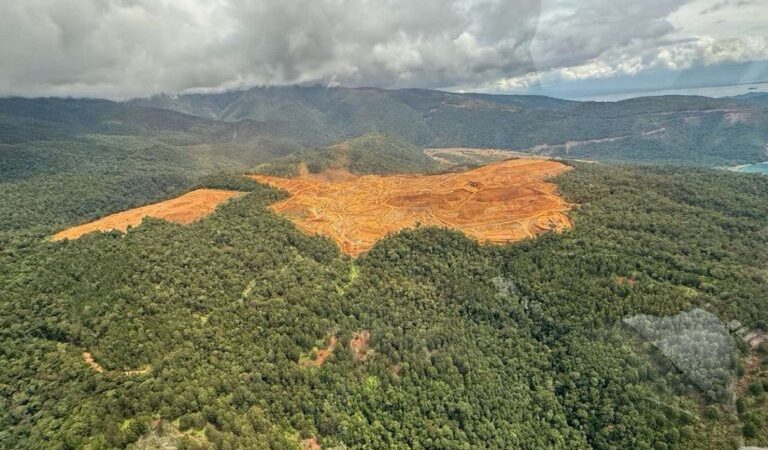MINDANAO, Philippines — A nickel mining project in the southern Philippine island of Mindanao is facing renewed calls for closure after a recent government inspection revealed that strip mining there has stripped bare about 200 hectares (494 acres) of forest land in an ecologically sensitive area. The Pujada Nickel Project, in the province of Davao Oriental, stands about 8 kilometers (5 miles) from the Mount Hamiguitan Range Wildlife Sanctuary, a UNESCO World Heritage site and ASEAN Heritage Park. It also sits 7 km (4.3 mi) upstream from Pujada Bay, a nationally protected seascape into which several rivers and creeks within the Mount Hamiguitan sanctuary drain, including waterways affected by the mining venture. The Pujada mine is operated by Hallmark Mining Corporation and Austral-Asia Link Mining Corporation under the management of Asiaticus Management Corporation, which are all controlled by Filipino mining investor Pedro O. Tan and his family. Part of a 2004 action plan to revitalize the nation’s mining industry, the project was awarded a Mineral Production Sharing Agreement in the same year and began commercial shipments in 2016. Due to its proximity to two protected areas and the anticipated environmental damage associated with large-scale mining, the project has faced opposition for more than a decade from the community-based Macambol Multi-Sectoral Association for Integral Development, the regional environmental group Interfacing Development Interventions for Sustainability (IDIS) and the Catholic Diocese of Mati. The Pujada Nickel Mining Project leaves a brown swathe of deforested land, sandwiched between the Mount Hamiguitan Range Wildlife Sanctuary…This article was originally published on Mongabay
Nickel mining damage near UNESCO site stirs outrage in southern Philippines



